#il distant frontier
Text
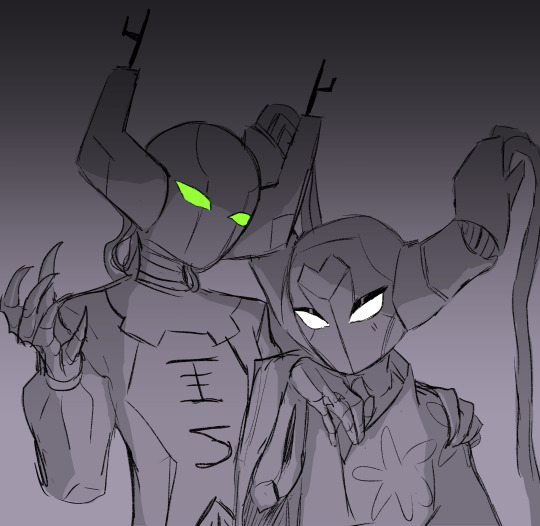
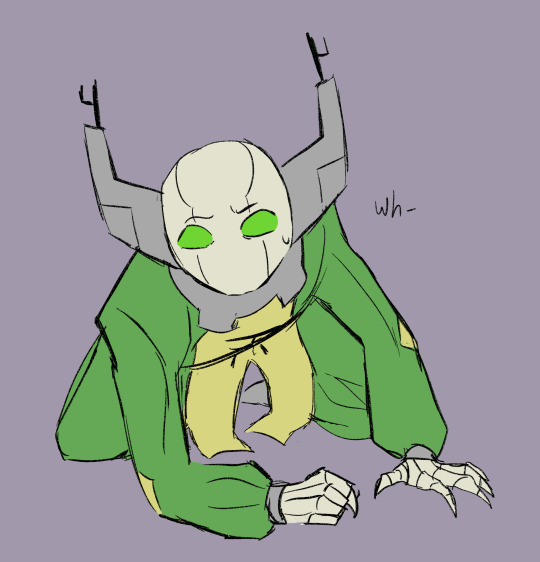
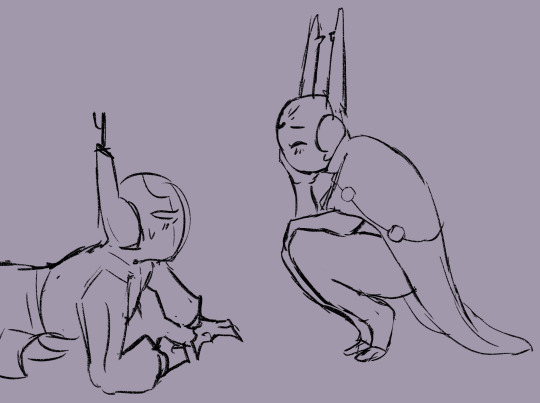
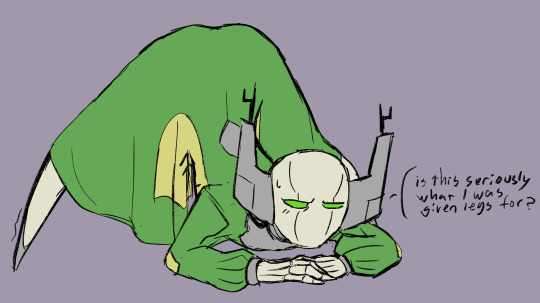
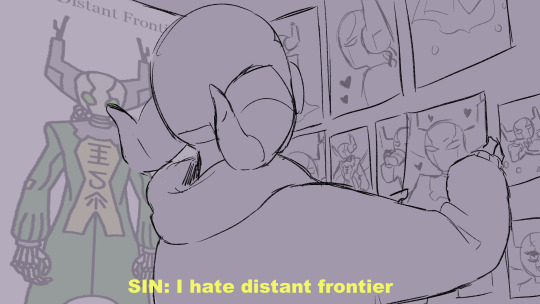

very normal Distant Frontier post ft Absolvent of Sins who's @distant-frontier-simp's oc. The gen 1 design of them in the first drawing is made by @poppy-purpura !!
Second to last is Sin's iterator sona :) reallll normal about DF.
Don't question the pose memes please please pl
#trashy art#rain world#rw#shitpost#iterators#iterator logs#distant frontier#il distant frontier#absolvent of sins#suggestive#just in case
95 notes
·
View notes
Text
Opinion On Drifting Skies
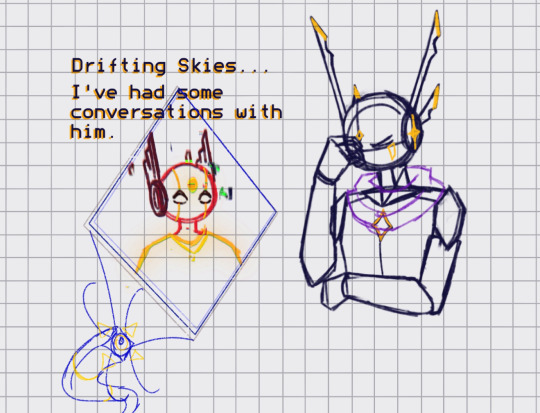


Overall, Drifting Skies is somewhat of a friend or an acquaintance.
13 notes
·
View notes
Text
big fucking art dump

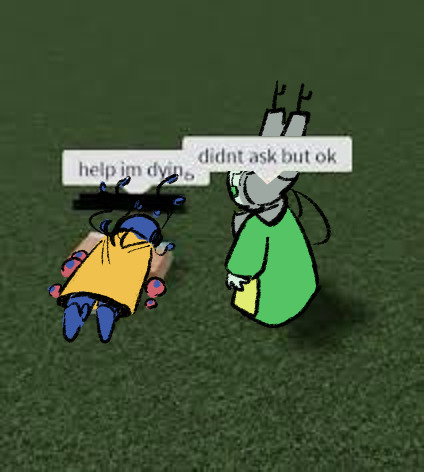
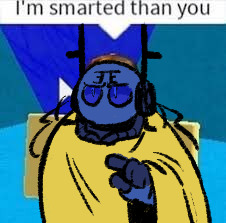
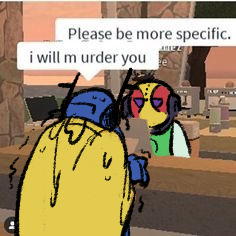



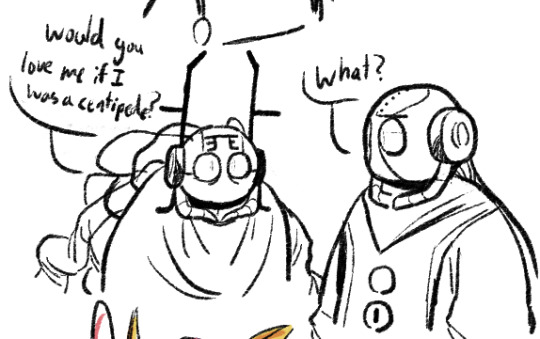


#rw#rain world#iterator logs#il#twisting roads#a taut thread#a gold strand#silent light#distant frontier#ribble the scribble
92 notes
·
View notes
Text
gay people . done on a big ol doodle canvas thus the other random things in the margins 💪🏳️🌈
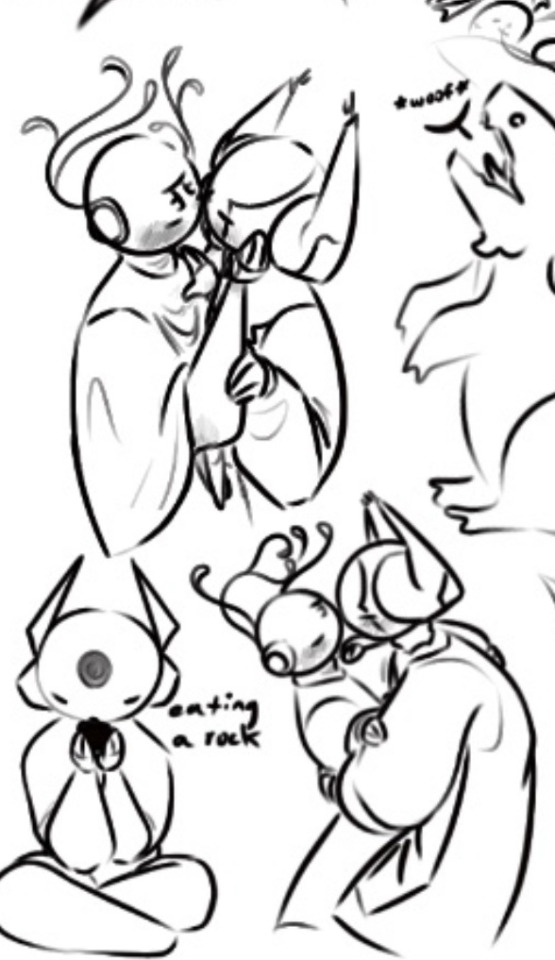
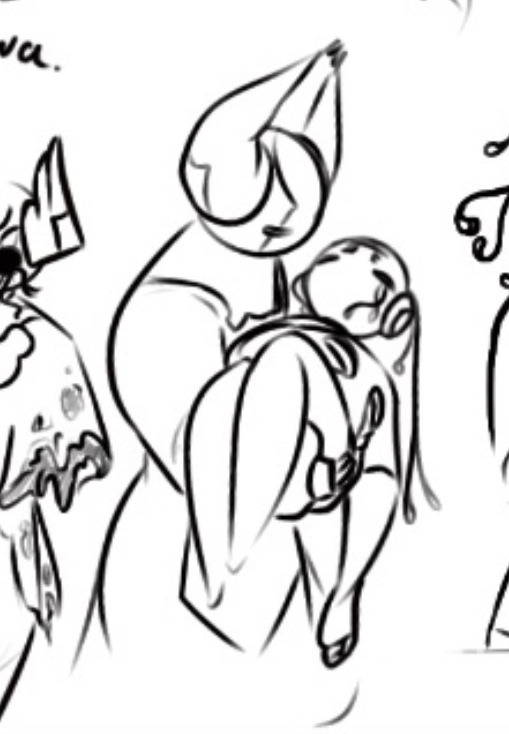

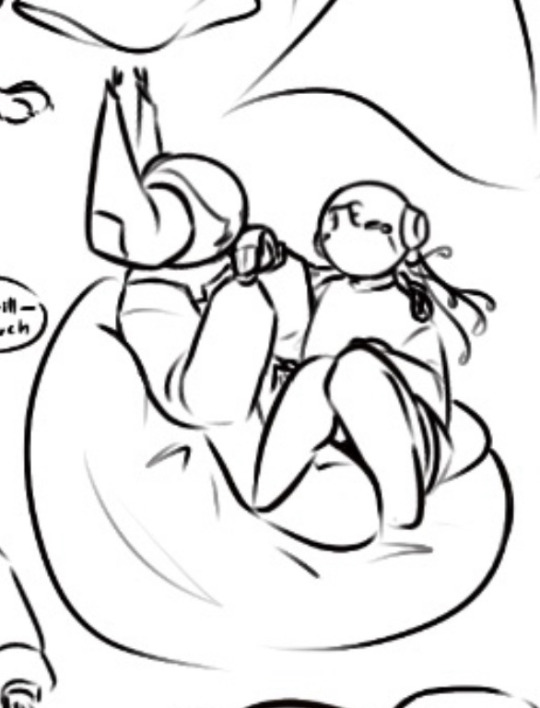

#rain world#il toxic yaoi#literally what is this ship name#(i say while my nickname on the server is ‘president of toxic yaoi’#its a funny name and tbh accurate#the only universe this relationship could be healthy is the one in my heart#do i even put this in the main tag???#fuck it#iterator logs#distant frontier#twisting roads
56 notes
·
View notes
Text

lizerd
42 notes
·
View notes
Text


daszombes iterator logs series is so cool. im gonna put DF in a hydraulic press (this feeling is completely unrelated to my AGS and TR favoritism)
#ME WHEN I SEE A MALE CHARACTER I WANT TO EXPLODE: PUT THAT PATHETIC BEAST IN A STUPID SITUATION.#yes i forgot first gen iterators didnt have legs in IL do NOT @ me#rain world#iterator logs#distant frontiers#a golden strand#my art
139 notes
·
View notes
Text
sure i'll post these here too
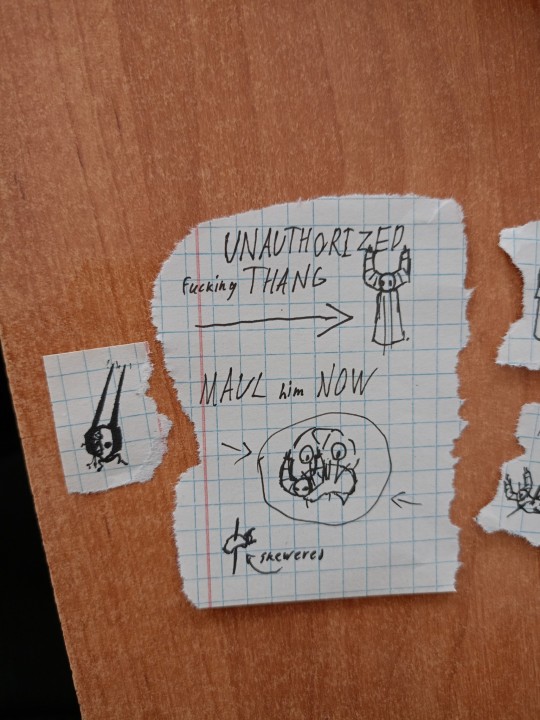
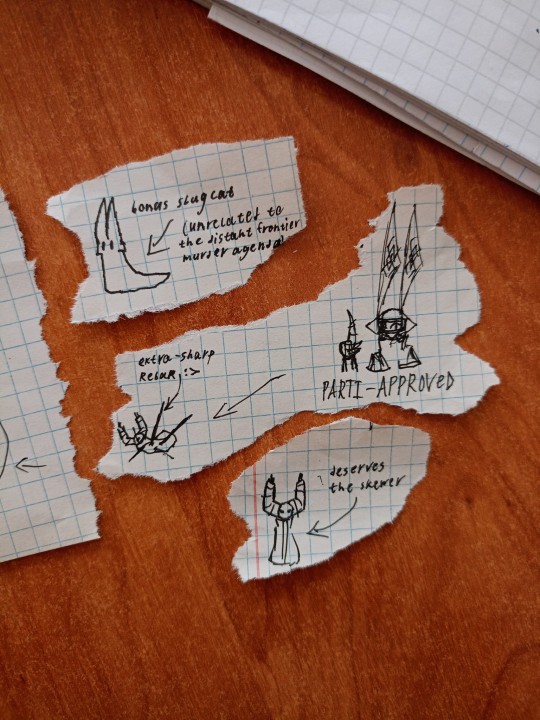
i draw normal things at school
case in point we should skewer fronty
#rain world#rain world oc#(because parti and that guy thats got half his face chewed)#iterator logs#yeah IL maintag sure why not lmao#distant frontier#not tagging slugcat it is irrelevant#/j. get scugged#slugcat#iterator
3 notes
·
View notes
Text

Gaetano Buttaro
Secret speck
a cura di Edoardo Di Mauro.
Gaetano Buttaro è artista di già lunga e consolidata esperienza. La sua vena creativa lo ha recentemente portato ad un aggiornamento importante del linguaggio, formulato in maniera tale da costituire un naturale proseguimento di poetica, da sempre centrata sull'essenzialità formale. L'onda di questa originaria e coerente ispirazione si infrange felicemente e permea di sé i lavori ultimi, dove si intrecciano con originalità la maggioranza delle dominanti estetiche dell'oggi, formulate con una freschezza espressiva tale da scacciare le noiose ricorrenze del "già visto". Vi è innanzitutto, come componente centrale, un omaggio alla ritrovata poetica "fredda" del corpo, da Buttaro sviluppata con modalità simbolica e devozionale, distante mille miglia da certe recenti performances grandguignolesche.
L'artista propone una parte per il tutto, le mani come elemento in grado di sottendere non solo la fisicità , ma soprattutto la spiritualità dell'individuo. Con il tramite di questa fondamentale porzione anatomica Buttaro si cimenta in svariati intrecci, vere e proprie costruzioni formali tali da sfociare in immagini polisignificanti. A questo punto entra in scena l'ausilio tecnologico, adoperato nell'accezione migliore di integrazione estetica e non di autonomo e totalizzante strumento di poetica. La descrizione dei vari passaggi tecnici è tutto sommato superflua. Quanto conta è il risultato finale, ottenuto grazie alle notevoli possibilità offerte attualmente dalla pittura digitale e dalle pratiche di stampa, in grado davvero di portare a nuove frontiere in termini di definizione dell'immagine.
Quindi l'artista si avvale strumentalmente dei ritrovati tecnologici per arricchire la sua possibilità di stupirci e di disorientare con la proposta di un'iconografia dal sapore antico ed atemporale, rafforzata, quanto a fascino visivo e forza evocativa, da queste nuove opzioni, con un sapiente connubio che sottolinea la forza del linguaggio dell'arte e le sue infinite possibilità . Partendo da un presupposto figurativo l'immagine scivola docilmente verso la china dell'astrazione, esaltata dalla potenza dei timbri cromatici, autentica cifra stilistica di queste spiazzanti ed originali composizioni.
Edoardo Di Mauro, 2020
1 note
·
View note
Text
Martina - Distante
Il nuovo brano di Martina, artista di Lecce

Distante, è il primo brano di Martina, scritto da lei parole e musica. Parla di un amore dissolto nel nulla, presente solo nel cuore di lei, che prova ad avvicinarsi al ragazzo che le piace senza alcun risultato. Un cliché presente nella vita di ogni adolescente, e non solo…
Martina Piconese, in arte Martina, nasce a Lecce e vive e studia a San Pietro Vernotico (Brindisi). Frequenta il terso anno di tecnico commerciale Ferraris-DeMarco-Valzani settore turismo. Ha studiato canto presso l’accademia Damus di Lecce ed è attualmente seguita dalla vocal coach Eleonora D’Apolito. Vincitrice e finalista di numerosi concorsi nazionali come Je so’pazzo, Voice Talent, Talent in Tour e prima classificata al Festival Internazionale Creatività senza frontiere, organizzato da MIF Association.
Etichetta: Orangle Srl - www.oranglerecords.com
Instagram: https://www.instagram.com/_martina18/
l’altoparlante - comunicazione musicale
www.laltoparlante.it
0 notes
Text
A Geo Barents assegnato porto di Ancona, a 5 giorni di navigazione: a bordo 48 migranti (tra cui 9 minori)
DIRETTA TV
13 Febbraio 2023
Alla nave Geo Barents di Medici Senza Frontiere è stato assegnato il porto di Ancona: dista 5 giorni di navigazione. A bordo ci sono 48 persone, tra cui 9 minori.
6
CONDIVISIONI
Assegnato il porto di Ancona alla nave di Medici Senza Frontiere. Ancora una volta le autorità hanno assegnato un porto molti distante rispetto al luogo in cui è stato effettuato il…

View On WordPress
0 notes
Photo

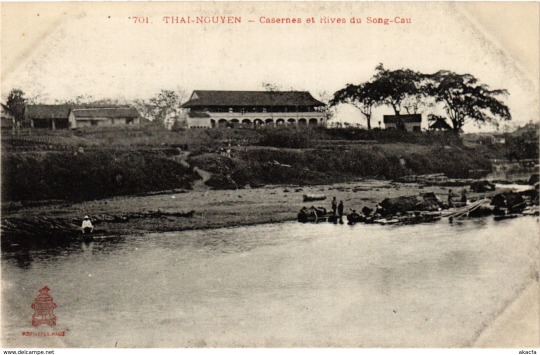
The Thai Nguyen Penitentiary: the cradle of revolt
The eclectic composition of rebel forces at Thai Nguyen reflected the peculiar dynamics of colonial prison administration. As a penitentiary located in Indochina’s northern tier, Thai Nguyen was authorized to receive political offenders and hardened criminals from every corner of Annam and Tonkin. Moreover, as at every other prison in Indochina, officials at Thai Nguyen disregarded regulations concerning the segregation of different categories of prisoners. Such neglect derived from the usual factors— administrative torpor, architectural shortcomings, and budgetary constraints— but was compounded by the unusual circumstance that the institution at Thai Nguyen functioned simultaneously as a provincial prison and a penitentiary.
During the first decade of civilian administration at Thai Nguyen (1892–1902), officials used a variety of makeshift buildings to incarcerate local lawbreakers. In 1903, a regular provincial prison was built, consisting of a rectangular cluster of buildings ringed by a circular path, patrolled day and night. The path was surrounded by a three-meter-high, rectangular concrete wall, in which jagged shards of glass were embedded. Additional security was provided by two towers at opposite corners of the wall. The prison’s main residential quarter was a single communal dormitory, unfurnished except for an elevated concrete platform along three of the inside walls. During the night, prisoners lay side by side atop the platform, their feet manacled to iron rings set into the concrete. Other than those confined for short periods to a handful of punitive cells, all prisoners were housed together in the main dormitory.
Following an upsurge of anti-colonial activity in 1908, the resident superior ordered the expansion of the prison at Thai Nguyen so that “it might receive, from each of the provinces in the protectorate, those convicts serving the longest and most severe sentences.” Thai Nguyen was chosen as the site for a more important penal institution because of its “remoteness from French population centers” and because the province badly needed penal labor for roadwork and construction projects. Completing the renovation in 1910, the resident announced that “the newly refurbished institution is no longer, properly speaking, a provincial prison, but a penitentiary that contains, at present, around 200 prisoners chosen from among the most dangerous of the Delta and the object, on my part, of a completely special surveillance.”
Although the prison at Thai Nguyen had been upgraded administratively to the status of a penitentiary, fiscal constraints prevented officials from constructing a new provincial prison as a replacement. As a result, Thai Nguyen continued to perform the functions of a provincial prison. This meant that short-term convicts sentenced by local tribunals were incarcerated together with long-term convicts sent to Thai Nguyen from distant provinces. Despite some concern generated by its unorthodox, hybrid character, officials still considered Thai Nguyen the most important and secure island in Tonkin’s penal archipelago:
The establishment of Ile de la Table is in ruins. As for the so-called penitentiaries of Son La and Lai Chau, they are in reality simple prisons, not set up to receive and effectively guard dangerous convicts. With regard to Cao Bang, its proximity to the frontier presents serious inconveniences from the point of view of ever-possible escapes. There remains, therefore, the penitentiary of Thai Nguyen, being well situated in the heart of the middle region and providing secure buildings that truly serve their intended purpose. The administration has a strong interest in developing this establishment and endowing it with a special personnel and making it a true, strongly organized penitentiary that will serve in Tonkin as Poulo Condore does in Cochin China.
Consistent with its mission, Thai Nguyen became a dumping ground for the most dangerous prisoners in Tonkin. In August 1917, offenders sentenced to from ten to twenty-five years’ forced labor were in the majority among the prison’s population. However, because the site continued to function as a provincial prison, it also held a large number of short-term convicts and defendants awaiting trial. At the outbreak of the rebellion, almost fifty prisoners, all from Thai Nguyen, were serving terms of simple imprisonment—a sentence that typically entailed a briefer (six months to a year) and milder punitive regime. Most had been sentenced for misdemeanors: petty theft, small-time banditry, battery, or crimes against public order such as vagrancy or chronic drunkenness.
Although the prison’s population grew increasingly complex, its basic layout remained a single communal dormitory—now enlarged—and a handful of individual cells. Indeed, the renovation of 1908 only augmented the scale of the prison without introducing any significant structural changes. In 1910, provincial officials acknowledged the dangers posed by the prison’s crude configuration but took no measures to rectify the situation. According to a prophetic report on prison conditions from that year:
A single modification that seems needed at Thai Nguyen concerns the interior setup of the prison for the purpose of stopping an ever-possible revolt. The prisoners are for the most part confined in a large building with no separation, such that in case of a concerted plot during which the detainees escape their bars, we would have to act against a mass of 175 individuals.
Colonial officials were less inclined to highlight flaws in institutional design and inadequate mechanisms of segregation to help explain the catastrophic violence that erupted at Thai Nguyen in 1917. After all, such an analysis underscored their own failure to undertake the necessary modifications, particularly since they had recognized the problem years before. It is not surprising, therefore, that officials in France (rather than their colonial counterparts) took the lead in linking the outbreak of the rebellion with the distinctive procedures and conditions of colonial incarceration. In the Chamber of Deputies in Paris, M. Lacave Laplagne declared that the very structure of the prison had allowed “the political prisoners at Thai Nguyen to rise up, win over the Garde indigène and their comrade prisoners, seize the provincial capital and massacre the French population.” Taking a shot at Governor-General Sarraut, Lacave Laplagne charged that “the rebellion resulted from the considerable imprudence of the colonial administration, which allows, in the prisons of the colony, a dangerous melange of political prisoners and common criminals.”
In a defensive response, Sarraut acknowledged the problem but said that, rather than being intrinsic to the Indochinese prison system, it had arisen because World War I prevented the deportation of political prisoners to Guyana and New Caledonia. Moreover, the Phan Xich Long rebellions of 1913 and 1916 and the simultaneous growth of Restoration Society activity had created a shortage of prison space throughout Indochina. In other words, Sarraut assured the deputy that the problem was a temporary one, and that in the future, a greater effort would be made to enforce what he called “a rigorous penal triage” so as to “prevent local movements in the penitentiary from taking on a political character.”
In contrast to Sarraut’s efforts at political damage control, others in the colony admitted that the problem had more durable roots. During his interrogation, Hoang Dinh Deu (sic), a garde, maintained that “at Thai Nguyen, those condemned to light sentences (six months to a year) were always subjected to the same regime as those condemned to heavy sentences (ten to twenty years).” And in a letter to the procureur général, the resident superior explained that “although the decree of October 26, 1914, states that prisons are to be arranged in such a way so as to permit certain prescribed and imperative separations among diverse categories of prisoners, the locales have always been poorly or insufficiently set up for this purpose.”
The resident’s comments suggest that colonial officials were not unaware of the security problems generated by a situation in which a broad mix of prisoners were incarcerated together in communal wards. Indeed, the fact that prison officials kept Luong Ngoc Quyen confined in one of the penitentiary’s solitary cells confirms that they did take measures to isolate especially dangerous convicts from the general population. Hence, the problem was less a conceptual blind spot than a structural shortcoming. With no more than a handful of individual cells, the prison lacked the fundamental capability to segregate a large number of political activists such as the several dozen who ended up at Thai Nguyen in 1917.
Forced Labor and Mortality
As in most colonial prisons, all inmates at Thai Nguyen were subjected to the same brutal regime of forced labor, irrespective of sentence or juridical status. Since the turn of the century, prison labor from Thai Nguyen had been used to build roads linking the expanding mining and agricultural concessions in the middle region to the urban centers in the Delta. Although the colonial state could also requisition civilian labor, a series of reforms introduced between 1897 and 1916 restricted the state’s ability to mobilize villagers for hazardous projects in remote areas. Convict labor thus came to be used for the most dangerous work. According to a report in 1917: “In Thai Nguyen, those condemned to forced labor are used for the most laborious tasks of colonization, including road building and the construction of public works. This regime is particularly harsh in such an unsanitary country.”
Again, in violation of penal regulations, prison officials forced political criminals and convicts serving terms of simple imprisonment to work alongside prisoners sentenced to forced labor. When questioned by investigators, officials maintained that pressing demands for manpower had prompted them to include all categories of prisoners in the forced labor regime.
Not only were convicts forced to undertake the most dangerous and onerous work but labor discipline was enforced through a host of brutal and coercive measures. According to an investigation of penal labor practices launched in 1918, a high proportion of disciplinary beatings at Thai Nguyen occurred at work sites. The investigation reported that “between 1915 and 1917 numerous beatings (often with truncheons) and other assorted acts of violence were directed at prisoners while they worked at quarries and road construction sites.” By way of illustration, it detailed a number of incidents from December 1916, including one in which gardes punished a prisoner for unsatisfactory work on a road detail by fracturing his wrists with a shovel.
No doubt, the rigors of forced labor contributed to the penitentiary’s extraordinarily high number of annual deaths. As prison records from this era do not report the number of convicts who entered and exited an institution during any given period, it is impossible to calculate mortality as a percentage of the total number of prisoners. However, a medical report comparing the absolute number of deaths in colonial penal institutions between 1908 and 1912 shows that more prisoners died at Thai Nguyen (332) during this five-year period than at any other prison in Indochina with the exception of Nam Dinh (355). Another document reveals that 192 prisoners died at Thai Nguyen in 1915, 165 in 1916, and, remarkably, 162 in the first half of 1917. A separate study undertaken by officers of the Garde indigène claimed that 670 prisoners (“roughly 250 per year”) died at Thai Nguyen between January 1, 1915, and August 31, 1917.
Just as all prisoners shared in the unnerving experience of forced labor, the penitentiary’s murderous death toll must have encouraged a powerful sense of their shared predicament among different categories of prisoners. “The revolt was greeted with joy by all those who had long sentences,” one prisoner, Dang Van Lu, explained to an interrogator, “because we believed that if we did not rebel, we would never leave the penitentiary alive.” His sentiments were echoed by Inspector Nicolas who concluded bluntly that the penitentiary was “less like a place of detention and more like a crematorium.”
Resident Darles and the Garde Indigène
As with the prison uprisings at Poulo Condore in 1918 and Lai Chau in 1927, the capricious despotism of a local French official contributed to the outbreak of the Thai Nguyen rebellion. The official in this case, Provincial Resident Darles, had served in the province for three years, during which time he earned the appellation “the butcher of Thai Nguyen.” The hatred rebels harbored for Darles is reflected in the dissatisfaction that they expressed upon learning that the resident was not among the early casualties of the revolt. According to one eyewitness account: “When the severed head of M. Martini was brought before Sergeant Can at the Thai Nguyen Market, he expressed disappointment because it was not the head of M. Darles.
In 1925, Nguyen Ai Quoc (the future Ho Chi Minh) provided a vivid description of the notorious resident in “French Colonialism on Trial,” his well-known polemical indictment of France’s colonial empire. “This M. Darles is a valuable administrator,” he began sardonically:
He acquired his political science in the Latin Quarter, where he was a restaurant keeper. Through the wishes of an influential politician, M. Darles, then without resources and loaded with debts, was made an administrator in Indochina. Comfortably installed at the head of a province of several thousand inhabitants, and invested with limitless power, he was mayor, judge, bailiff, and bailiff’s man; in a word, he held all the offices. Justice, taxes, property, lives and property of the natives, rights of officials, elections of mayors and canton chiefs, that is to say, the fate of a whole province was entrusted to the hands of a former innkeeper. As he had not been able to get rich by extracting money from his clients in Paris, he got his own back in Tonkin by having Annamese arbitrarily arrested, imprisoned, and condemned to extort money from them.
Ho’s portrayal of Darles as a petty provincial autocrat is confirmed by official sources. According to a report prepared in the wake of the rebellion, Darles’s unchecked power over prison administration derived from his successful efforts to wrest control of the Garde indigène from military officers:
In a number of provinces, the residents have a more or less marked tendency to substitute themselves for the brigade commandant and to seize all power and authority over his men and his European subordi nates. The commandant then becomes a sort of “corporal,” incapable of supporting his personnel and garnering from them the appropriate respect and discipline. The Thai Nguyen brigade, in terms of the annihilation of the commandant, was a model of this genre.
Indeed, Inspector Noel, the officer in charge of the Garde indigène at Thai Nguyen and the rebellion’s first casualty, frequently complained that the constant meddling of the resident had undercut his authority. “I am nothing. I do nothing,” Noel was quoted as saying. “The resident does everything. He names non-commissioned officers, orders promotions, demotions, and punishments, and corresponds with other posts without my knowledge.” Several eyewitnesses concurred that the almost complete usurpation of his authority by the resident had demoralized Noel.
Moreover, Darles was sadistically brutal toward prisoners, gardes, and native civil servants. The extent of his cruelty was documented in an enquiry commissioned by the governor-general in November 1917. Beginning with his first posting at Son Tay Province in 1908, it chronicled twenty-seven documented instances of beatings, canings, whippings, and assorted “acts of violence” perpetrated by the resident. The following excerpt from the enquiry conveys something of its flavor:
1. Son Tay, 1909—breaking the fingers of the interpreter Pham Van Thanh with a metal rod. Witness: M. Tragan, administrator of the Civil Service.
2. Phuc Yen, 1911—acts of violence and beating of his domestic servants. Witness: M. Martin.
3. Phuc Yen, 1912—violent beating of a soldier engaged in guarding prisoners. Witness: M. Pierrard, inspector of the Garde indigène, M. Bonin, garde principal.
Phuc Yen, 1912—beating of Cai Boi, official of the Public Works Department. Witness: M. Marnac: engineer of Public Works Department.
Phuc Yen, 1912—bloody caning of a canton chief while he supervised coolies along a road work site. Witness: M. Marnac.
Phuc Yen, 1912—punching of an anonymous native, who was then thrown into a pond. Witness: M. Marnac.
Thai Nguyen, 1914—on the route from Dong Du to Cho-Chu, violent beating with a truncheon of an unidentified public works official. Witness: M. Herninet, administrator of the Civil Service.
Lang Hit, 1914—beating the soldier Hoang Van Chuc with a riding
whip.
Thai Nguyen, 1914—grave acts of violence on three militiamen who
had allowed a suspect to escape. Witness: M. Tustes, administrator,
M. Bary, administrator.
In addition to the depressing litany of everyday physical abuse covered in the report, the administration gathered a number of more detailed accounts of the resident’s violent behavior. Commonplace were cases in which Darles had struck gardes and prisoners in the face, stomach, and groin for insignificant or obscure reasons. He allegedly relished contriving creative disciplinary measures such as forcing gardes to carry sacks of sand and gravel while supervising corvée or making prisoners stand at attention or run in place for hours under the blazing afternoon sun. Among the most severe cases were an instance in which an abrupt baton blow by Darles put out the eye of a prisoner and another in which an impromptu beating shattered the collarbone of a hapless clerk. According to another allegation, the resident was rumored to have raped the wife of a prominent native administrator.
Perhaps the most striking conclusion demonstrated by the various investigations concerned the utterly indiscriminate nature of the resident’s wrath. Just as convicts and coolies were subjected to regular thrashings, so, too, were interpreters, clerks, soldiers, and civil servants. Gardes frequently complained that the resident and his men treated them no better than prisoners. They charged that, like prisoners, they were continually subjected to verbal harassment, unfair punitive measures, and beatings. One reported:
“I was beaten one time with three baton blows to my face because I did not
understand the resident when he spoke to me in French.” Another stated: “The resident often punished the men for minor reasons such as smoking or speaking in the barracks after lights out.” And still another said: “Often the resident would arrive on a route where prisoners were working and beat the files of prisoners and their gardes at the same time.”
French eyewitnesses described similar episodes: “When M. Darles came to inspect the corvée, he typically beat the gardes and prisoners with a large stick if the work failed to meet his standards.” Within the confines of the penitentiary, this virtual democracy of abuse no doubt muddied the sense of division between the keepers and the kept.
Many gardes even described their military service as a form of captivity. The similarities were easy to discern, given the parallels of forced recruitment, physical brutalization, constant surveillance, and communal living. Moreover, gardes described being coerced to remain in the corps despite the termination of their initial contracts. “Some of us were especially discontented,” explained Nguyen Van Hoa, “because we have been forced to continue in the service over six months after the expiration of our five-year terms.” Tran Van Phuong related a similar story: “I have been forcibly retained for over two months despite the end of my term and have received no back pay.”
Lines blurred further when French officials disciplined gardes by forcing them to work alongside convicts on forced labor details. Even more remarkable, gardes were sometimes punished with short periods of confinement within the penitentiary. “Certain gardes actually serve punishments for disciplinary infractions within the prison,” one report explained. “In such cases, gardes are placed in the company of the very prisoners whom they had previously been assigned to guard on corvée duty.” Appalled at the practice, one investigator argued that it laid at the root of the rebellion. “This in my opinion, sheds light on the real cause of the Thai Nguyen Revolt.Treated like prisoners, sometimes worse, the Garde indigène freed the convicts, who became willing auxiliaries. Maltreated by the resident, they united with the prisoners in their hatred for the administration that was supposed to protect them.’
- Peter Zinoman, The Colonial Bastille: A History of Imprisonment in Vietnam, 1862–1940. Berkeley and Los Angeles: University of California Press, 2001. pp. 185-196.
#vietnam#tonkin#thai nguyen#prison riot#prisoner revolt#convict revolt#prisoner resistance#convict labour#prison guards#prison brutality#violence in prison#causes of prison riots#french colonial empire#french indochina#colonial prison#the colonial bastille#french colonialism#crime and punishment#history of crime and punishment#academic research#academic quote
1 note
·
View note
Photo
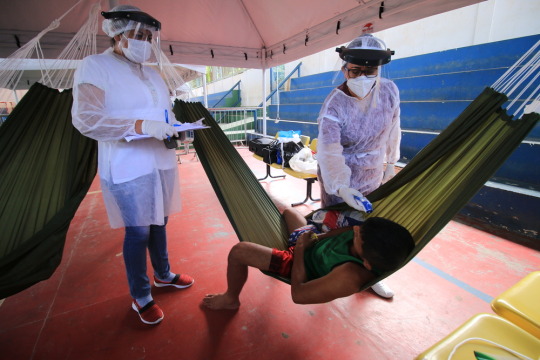
Brasile, morti 100 infermieri al mese In Brasile l’incubo Coronavirus continua ad essere fuori controllo: è questa la denuncia di Medici senza Frontiere, che da mesi sono impegnati nella lotta all’emergenza sanitaria nel Paese che sta per raggiungere quota 1 milione di casi. Situazione disastrosa tra le popolazioni indigene: “I test sono insufficienti e il numero degli operatori sanitari colpiti cresce sempre di più, con circa 100 infermieri morti al mese. (...) A Tefe, una città dell’Amazzonia brasiliana distante da Manaus un giorno e mezzo di navigazione lungo il fiume Rio delle Amazzoni, "i medici dell’ospedale mi hanno detto che quasi il 100% dei loro pazienti con Covid-19 era deceduto", ha continuato Janssens. A ciò si aggiunga che i tamponi effettuati sono ancora pochi: il Paese ha registrato 7.500 test per milione di persone, dato dieci volte inferiore agli Stati Uniti (74.927 per milione). Ma la situazione è diventata difficile anche a Rio de Janeiro, San Paolo e, recentemente, a Boa Vista, una città al confine settentrionale con il Venezuela. (...) Prima di raggiungere le categorie più vulnerabili della popolazione, il Coronavirus è passato per le classi più agiate che presumibilmente lo hanno introdotto nel Paese dopo aver fatto viaggi all'estero, così come è successo anche in altre zone dell'America Latina. Per diverse settimane, la diffusione è stata contenuta nei quartieri benestanti ma poi è arrivata gradualmente nelle zone più povere, con impatti devastanti. Le persone che vivono in condizioni di marginalità sociale, come i senza fissa dimora, i tossicodipendenti, gli anziani nelle case di cura, gli abitanti delle favelas e degli insediamenti informali, avevano già difficoltà di accesso alle cure mediche prima e ora la loro situazione è disastrosa: rischiano di morire con scarse possibilità di assistenza. (...) "Covid-19 ha travolto un numero sempre maggiore di persone in povertà estrema, lasciandole senza casa e spesso senza speranza.... Vedere persone che soffrono e hanno difficoltà ad accedere al normale sistema sanitario è straziante, ma ci sono cose che possiamo fare per dare a queste persone le cure a cui ha diritto qualsiasi altro cittadino". di Ida Artiaco
20 notes
·
View notes
Link
Un cocktail di tre diversi farmaci anti-età, già noti ma mai usati in combinazione, ha quasi raddoppiato la durata della vita in un noto modello biologico. I vermi nematodi (Caenorhabditis elegans) trattati con il mix non solo hanno ottenuto il record di maggiore longevità indotta da farmaci mai osservato nel mondo animale, ma hanno anche visto estendere il periodo in cui sono rimasti in buona salute e senza alcun effetto collaterale. La ricerca della National University di Singapore e dello Yale-NUS College è stata pubblicata su Developmental Cell.
I vermi nematodi sono spesso utilizzati negli studi sull'invecchiamento perché hanno un genoma ben conosciuto e sequenziato, sono facilmente osservabili al microscopio e vivono per 2-3 settimane - un tempo sufficientemente breve per valutare gli effetti di farmaci o alterazioni genetiche.
"Frontiere della medicina: i farmaci impossibili" è il titolo dell'incontro in programma venerdì 9 novembre alle 11,30 al Focus Live con Silvio Garattini, fondatore e presidente dell’Istituto Mario Negri, Rosetta Pedotti, impegnata sull’Alzheimer, e Mario Clerici, in prima linea negli studi sull’Aids.
Il Focus Live si terrà a Milano, in collaborazione con il Museo Nazionale Scienza e Tecnologia, dall'8 all'11 novembre: 50 mila metri quadrati di incontri, laboratori ed eventi, per incontrare da vicino i "top player" della scienza internazionale.
L'unione fa la forza? Scopo degli scienziati era capire se la combinazione di farmaci antietà già conosciuti per estendere la durata in modelli animali semplici e già usati sull'uomo in ambito clinico (per esempio, per limitare il rigetto agli organi trapiantati) potesse sortire risultati migliori rispetto alla terapia con i farmaci "singoli". Con l'obiettivo a lungo termine di trasferire un giorno queste conoscenze sull'uomo, sono state impiegate soltanto molecole già impiegate su pazienti o la cui sicurezza fosse già stata testata sui mammiferi.
Il mix vincente. Sono state provate varie combinazioni tra cinque farmaci, ma la più efficace è risultata quella formata da un antibiotico chiamato rifampicina, un agente immunosopressivo, la rapamicina, e un composto impiegato in ambito cosmetico, l'allantoina. I vermi trattati hanno visto raddoppiare la durata della loro vita con una buona continuità sulla salute e nessun effetto collaterale degno di nota. Risultati analoghi sono stati osservati in un altro, distante modello animale: i moscerini della frutta.
Prospettive. La speranza a questo punto è che gli effetti siano universali e possano essere estesi anche all'uomo. Una delle maggiori sfide poste dall'invecchiamento della popolazione, infatti, non è solo prolungare la durata della vita, ma estendere la durata degli anni vissuti in buona salute. In ogni caso si tratta, per ora, di una ricerca soprattutto teorica: il punto non era trovare specifici bersagli farmacologici, ma dimostrare che un attacco all'invecchiamento su più fronti simultaneamente può massimizzare i risultati.
1 note
·
View note
Text
Every movie I have seen (as of August 2018)
Here’s every movie I have ever seen, at least the ones I’ve remembered, I know I’m missing some.
Moneyball
Harold Lloyd – Safety last
Marx Brothers: A night at the Opera
Marx Brothers: A day at the races
Marx Brothers: a day at the circus
October Sky
Monty Python’s Holy Grail
Monty Python’s Meaning of Life
Monty Python’s Life of Brian
The Fugitive
Field of dreams
Major league
2001 a space odyssey
Willy Wonka and the chocolate factory
Galaxy Quest
Star Trek The Motion Picture
Star Trek the Wrath of Khan
Star Trek the Search for Spock
Star Trek the Voyage Home
Star Trek the Final Frontier
Star Trek The Final Frontier
Star Trek Generations
Star Trek First Contact
Star Trek Insurrection
Star Trek Nemesis
Star Trek (Reboot)
Star Trek Into Darkness
Star Trek Beyond
Spaceballs
Blazing Saddles
Young Frankenstein
The Treasure of the Sierra Madre
Invictus
Shrek
The great escape
Big
Ferris Bueller’s Day Off
Home Alone
Where eagles dare
Rocky
Happy Gilmore
E.T.
War of the worlds (2005)
The Avengers
Captain America
Ed Wood
Plan 9 from Outer Space
The Sidehackers [MST3K]
Manos: the Hands of Fate [MST3K]
Juno
Indiana Jones Raiders of the Lost Arc
Indiana Jones The Temple of Doom
Indiana Jones Last Crusade
Indiana Jones The Kingdom of the Crystal Skull
Raiders of the Lost Ark: The Adaptation (1989)
The Hobbit (animated)
The Lord of the rings pt . 1 (animated)
The Lord of the rings pt . 2 (animated)
The Hobbit 1
The Hobbit 2
The Hobbit 3
TLOTR Fellowship
TLOTR Two Towers
TLOTR ROTK
Star Wars IV
Star Wars V
Star Wars VI
Star Wars I
Star Wars II
Star Wars III
Star Wars VII
Star Wars VIII
Harry Potter 1
Harry Potter 2
Harry Potter 3
Harry Potter 4
Harry Potter 5
Harry Potter 7-1
Harry Potter 7-2
Ben Hur (original)
Ben Hur (1959)
Fantasia
Fantasia 2000
Spy Kids
Spy Kids 2
Spy Kids 3
Pirates of the Caribbean
Pirates of the Caribbean 2
Pirates of the Caribbean 3
Blues Brothers
Anchorman
The Big Lewbowski
Mad Max Fury Road
Mad Max (Original)
Interstellar
The Martian
Finding Nemo
Toy Story
Toy Story 2
Toy Story 3
Monsters Inc.
Up
A Bug’s Life
The Incredibles
Frozen
Ratatouille
Wall-E
Dunkirk
National Lampoon’s Family Vacation
National Lampoon’s Christmas Vacation
The Santa Clause
The Santa Clause 2
It’s A Wonderful Life
Miracle on 34th Street
Gideon’s Trumpet
V for Vendetta
Napoleon Dynamite
Elf
Olive the Other Reindeer
Superman
Superman 2
Man of Steel
Spiderman 3: Edgelord Peter Chronicles
To Kill a Mockingbird
Ocean’s 11
Men in Black
Men in Black 2
Slumdog Millionaire
My Cousin Vinnie
Transformers
Shawn of the dead
Jurassic Park
The Lost World
Jurassic Park 3
Jurassic World
Mrs Brisbee and the Rats of Nimh
High School Musical
Midnight in Paris
Godzilla vs Mothra or some shit like that, it had GZ and Mothra in it, ok?
(American) Godzilla
Back to the Future
Back to the Future 2
The Dark Knight
The Dark Knight Rises
Tootsie
Alien vs Predator
Casablanca
The Prestige
The Terminal
12 Angry Men
Minority Report
James Bond Live and Let Die
James Bond Casino Royale
James Bond Skyfall
Airplane
Airplane 2
Naked Gun
Naked Gun 2 ½
Naked Gun 33 1/3
Pink Panther
Inception
King Kong (Peter Jackson)
Hotel Rwanda
Groundhog Day
Ghostbusters
Ghostbusters 2
Ghostbusters (female reboot)
Caddyshack
Pan’s Labyrinth
Night at the Museum
The 3 Musketeers
Paul Blart Mall Cop
Cloud Atlas
The Sandlot
Armageddon
The Road to El Dorado
Chicken Run
Wallace and Gromit: Curse of the Were-Rabbit
Madagascar
She’s the Man
101 Dalmatians
20,000 leagues under the sea
Zorro (original)
The Absent-minded professor
Mary Poppins
Herbie the Love Bug
Herbie 2
My Side of the Mountain
Race to Witch Mountain
The Wizard of Oz
The Wiz
Honey I shrunk the kids
Honey we shrunk ourselves
Honey I blew up the baby
Cool Runnings
Angels in the Outfield
Field of Dreams
The Lion King 1 ½
The Lion King 2: Simba’s Pride
Inspector Gadget
The Princess Bride
Treasure Planet
The Rookie
The Simpsons Movie
Pokemon the first movie: Mewtwo Strikes Back
Pokemon 2000
Pokemon 3 Spell of the Unown
Pokemon 4ever
Pokemon Heroes
Pokemon Mewtwo Returns (technically a special, not a movie)
Pokemon Jirachi Wish Maker
Pokemon the rise of Darkrai
Pokemon Giratina and the Sky Warrior
Pokemon Arceus and the Jewel of Life
Pokemon Black
Pokemon White (80% the same as Pokemon Black)
Pokemon Kyurem vs the Swords of Justice (and that’s the most recent one I’ve watched)
Ice Age
Ice Age 2
Ice Age 3
Prometheus
Iron Man 1
North by Northwest
Who Framed Roger Rabbit
Captain America
Ratatoulle
Love Live the School Idol Movie
Your Name (Kimi no Na Wa)
The Garden of Words
5 Centimeters per Second
The Place Promised in our Early Days
Voices of a Distant Star
Children who chase Lost Voices/Journey to Agartha (Hoshi o ou kodomo)
Nausicaa of the Valley of the Wind
Howl’s Moving Castle
Kiki’s Delivery Service
Princess Mononoke
A Silent Voice
Napping Princess [Ancien & the Magic Tablet]
Interstella 5555
Marie and the Witch’s Flower
The Sting
Apollo 13
Bill and Ted’s Excellent Adventure
Rear Window
The Birds
This is Spinal Tap
The Iron Giant
The Hunger Games
Supersize Me
Africa Screams
Office Space
Dr. Strangelove, or How I Learned to Stop Worrying and Love the Bomb
Freaky Friday (remake verson)
National Treasure
National Treasure 2: Sean Bean dies this time
The Da Vinci Code
Angels and Demons
A Christmas carol (old version)
A Christmas carol (the one with Patrick Stewart)
A Christmas Story
Oz the Great and Powerful
The Wizard of Oz 3: Dorothy Goes to Hell (cinemassacre)
Taken
Kung Fu Panda
Super 8
Seeking a Friend for the End of the World
Talledega Nights
Crocodile Dundee
Crocodile Dundee 2
Romancing the Stone
Like Mike
Space Jam
Looney Toons Back in Action
Scooby Doo Ghoul School
Scooby Doo Reluctant Werewolf
Scooby Doo on Zombie Island
Scooby Doo and the Witch’s Ghost
Scooby Doo and the Alien Invaders
School of Rock
The Polar Express
The Bad News Bears (original)
The Dream Team
The Gods must be Crazy
The Gods must be Crazy 2
American Tale
The Dark Crystal
My Friend Martin (Animated MLK jr. history lesson thing)
Jakob the Liar (Holocaust story about a man in a ghetto claiming he has a radio, remake of a 70’s east german version of the same story)
The Devil’s Arithmetic
Man of Marble (1977) (Polish film)
Doctor Strange
Wonder Woman
U2 3D
A Hard Day’s Night
Help!
The Beatles: Eight Days A Week (touring documentary, 2016)
Yellow Submarine
UHF
Stop Making Sense
Mama Mia!
Valerian and the City of 1000 Planets
Il Boom
Lost in Translation
House of Flying Daggers
Edge of Tomorrow
Pacific Rim
The Post
Arrival
Evan Almighty
Bruce Almighty
Ace Ventura Animal Detective
Ace Venture Pet Detective
Despicable Me
Get Smart
Over the Hedge
March of Penguins
The African Queen
Girl, Interrupted
Gandhi
Around the World in 80 Days (Jackie Chan version)
Chicago (the musical)
Hugo
Journey to the Center of the Earth
Osmosis Jones
Cars
Les Miserables (2012)
Singing in the Rain
West Side Story
Mary Poppins
The General (Buster Keaton)
Little Big Man
Planes, Trains, and Automobiles
O Brother Where Art Thou
Beowulf (2007)
Crash
The Maltese Falcon
The African Queen
The Rocker
It’s a Mad Mad Mad Mad World
The Same Moon (La Misma Luna)
Airheads
The Secret of Roan Inish
Dave
Charlotte’s Web
Babe
The Three Musketeers
Dr. Doolittle
20,000 Leagues Under the Sea [I do not remember this at all]
Snow White and the Seven Dwarfs [I do not remember this at all, either]
101 Dalmatians
Aladdin and the King of thieves
Sweeny Todd
[That bad vampire movie I saw at a party in like 2012]
[That other MST3K sci-fi movie about the bodyswap]
Tekken: Blood Vengence
Jason Borne (2016)
Metropolis (2001, anime)
Pay It Forward
Sister Act 2
(some shitty bullying movie)
The Atomic Brain [MST3K]
Hairspray
Dallas Buyer’s Club
Seven Samurai
Magnificent 7 (1960)
A Funny Thing Happened On The Way To The Forum
Cinderella (Disney)
Ever After: A Cinderella Story (1998)
The Music Man
The King’s Speech
The Great Dictator
Oliver!
Kiss me Kate
Pirate Radio
Wrongfully Accused (Leslie Nielson)
(Huck Finn movie)
Bridesmaids
Modern Times
Abbot and Costello Meet Frankenstein
Metropolis (1927)
Funny Farm
The Black Stallion
National Velvet
Bionicle: Mask of Light
Arsenic and Old Lace
Unaccompanied Minors
Terminator
Isle of Dogs
A Quiet Place
Akira
Loving Vincent
Tangled
Hoodwinked
How to Train Your Dragon
The Nightmare Before Christmas
Ghost in the Shell (1995)
Fear and Loathing in Las Vegas
Samurai Cop (1991) [Rifftrax]
Birdemic: Shock and Terror [Rifftrax]
Solo: A Star Wars Story
Oh Lucy!
The Complete Works of William Shakespeare, Abridged
The Thief Lord
Breaking Away (1979)
Fright Night (2011)
Sharknado [Rifftrax]
The Incredibles 2
Mongolian Ping Pong
The Gold Rush (Charlie Chaplin)
City Lights (Charlie Chaplin)
City Slickers
(Escape to) Victory (1981)
The Phantom of the Opera
The Secret Life of Walter Mitty
Fireworks: Should we watch them from the bottom or the side? (2017)
Ed Edd and Eddy’s Big Picture Show
Jaws
The Color of Friendship (2000)
Flatland
The Wolverine (2013)
Codename: Kids Next Door – Operation Z.E.R.O.
Incredibles 2
Shawn the Sheep
Goodachari
Mutiny on the Bounty
Happy Death Day
4 notes
·
View notes
Text


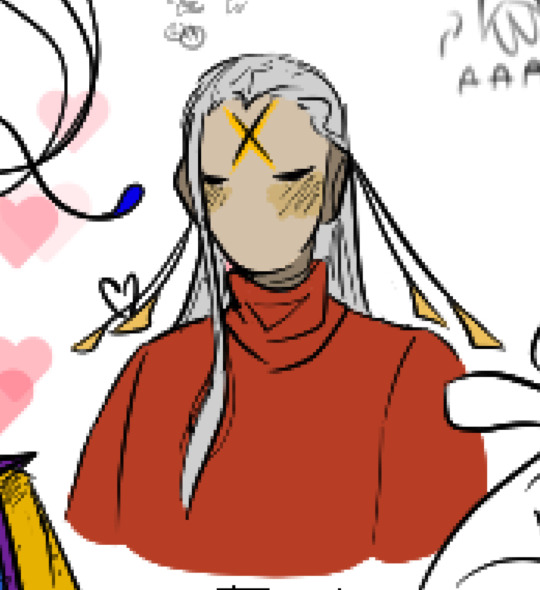
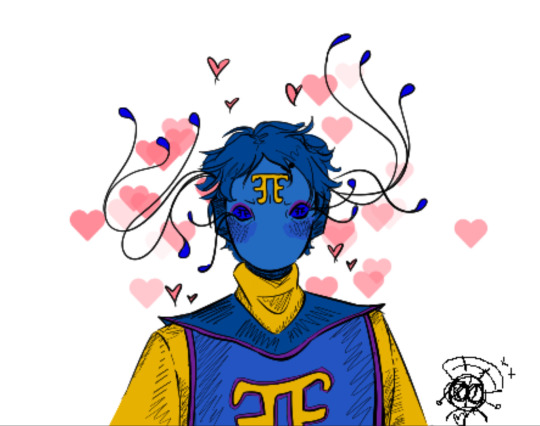

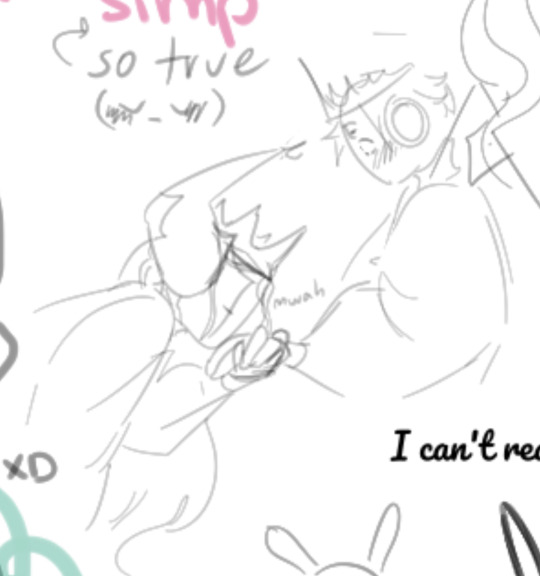
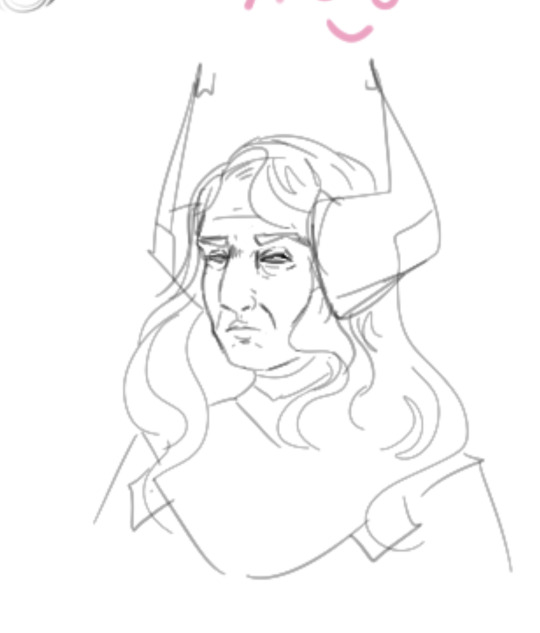
just aggie things
#rain world#rain world iterator#iterator logs#five pebbles#looks to the moon#unparalleled innocence#sliver of straw#twisting roads#distant frontier#il toxic yaoi
36 notes
·
View notes
Photo
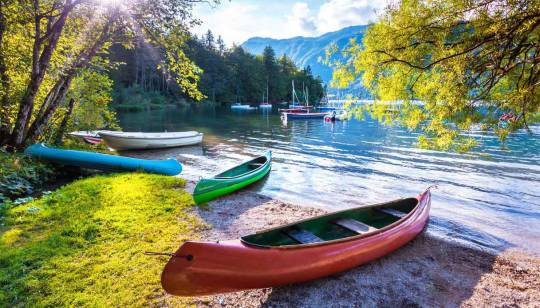
Dal 15 giugno le frontiere della Slovenia sono aperte agli italiani senza obbligo di controllo. Ne viene fatto uno ogni tanto solo occasionalmente. L’Italia è stata inserita dal nostro vicino di casa nella lista dei Paesi sicuri. Quindi si pò andare a trascorrere una freschissima estate in questa meta “green”. E “Green & Safe” è anche il nuovo protocollo di sicurezza che è stato ideato in Slovenia per garantire tutti i luoghi frequentati dai turisti. Le principali attrattive per chi viene in vacanza in Slovenia sono da sempre la natura (per guesto motivo è detta “il cuore verde d’Europa”) e il wellness. Nei centri termali, che qui sono tantissimi e famosi pwr essere anche molto convenienti, sono state ridotte le capienze con una persona ogni 2 mq di acqua. Da quest’estate, però, c’è un motivo in più per andare in vacanza in Slovenia, che ha sempre a che fare con il piacere, ma questa volta della gola: è arrivata finalmente anche qui la prestigiosa Guida Michelin che assegna le Stelle ai migliori ristoranti. La Slovenia ne conta già 6, uno dei quali, il ristorante Hiša Franko di Caporetto, con la chef Ana Roš, ha ottenuto due Stelle Michelin mentre gli altri 5 ne hanno avuta una: il ristorante Gostilna pri Lojzetu a Pri Lojzetu, nella valle della Vipava, dello chef Tomaž Kavčič, Hiša Denk a Zgornja Kungota con lo chef Gregor Vračko, Vila Podvin a Radovljica dello chef Uroš Štefelin, Dam a Nova Gorica con lo chef Uroš Fakuč e infine Atelje a Lubiana, con lo chef Jorg Zupan. la splendida Valle dell’Isonzo @123rf Tra le Alpi Giulie ci sono alcuni dei paesaggi più belli della Slovenia. Come il Parco nazionale del Triglav, l’area protetta più estesa della Slovenia e l’unico parco nazionale. Ha preso il nome dalla montagna più alta del Paese, il Triglav (Tricorno) alto 2.864 metri, che è considerato una specie di “montagna sacra”. Una delle più famose leggende slovene narra del camoscio alpino con le corna d’oro che regnava in questa zona. Se siete fortunati potrete anche avere la chance di incontrarlo. Questo paesaggio incantato è dominato dall’Isonzo, il fiume color smeraldo, dall’iconico lago di Bled, con la sua isola e dal misterioso lago di Bohinj. Il lago di Bled e l’isola @123rf La valle dell’Isonzo è la principale destinazione outdoor in Slovenia. Il fiume smeraldino rende possibile praticare numerosi sport acquatici, ma ci sono anche numerosi percorsi tematici che svelano il patrimonio della Grande guerra e altre storie tipiche della valle. Bled, con il romantico specchio d’acqua e il castello sulla roccia, è tra le località di villeggiatura alpine più belle in Europa. Vale la pena raggiungere l’isola in barca e salire le scale con 99 gradini per arrivare fino alla chiesa della Madonna sul lago. Dicono che chi suone le campane può esprimere un desiderio che si realizzerà. Dalla cima del campanile alto 52 metri si può ammirare il lago e i suoi dintorni. Il lago di Bohinj, infine, è un’oasi di pace e di natura e si trova in una valle paradisiaca. Intorno al lago c’è un sentiero ciclabile. Il percorso riserva sorprese naturali, culturali e culinarie ed è distante dal traffico, motivo per cui è adatto anche alle famiglie. Il bellissimo lago di Bohinj @123rf https://ift.tt/3i2RRrV La Slovenia è la meta più green dell’estate Dal 15 giugno le frontiere della Slovenia sono aperte agli italiani senza obbligo di controllo. Ne viene fatto uno ogni tanto solo occasionalmente. L’Italia è stata inserita dal nostro vicino di casa nella lista dei Paesi sicuri. Quindi si pò andare a trascorrere una freschissima estate in questa meta “green”. E “Green & Safe” è anche il nuovo protocollo di sicurezza che è stato ideato in Slovenia per garantire tutti i luoghi frequentati dai turisti. Le principali attrattive per chi viene in vacanza in Slovenia sono da sempre la natura (per guesto motivo è detta “il cuore verde d’Europa”) e il wellness. Nei centri termali, che qui sono tantissimi e famosi pwr essere anche molto convenienti, sono state ridotte le capienze con una persona ogni 2 mq di acqua. Da quest’estate, però, c’è un motivo in più per andare in vacanza in Slovenia, che ha sempre a che fare con il piacere, ma questa volta della gola: è arrivata finalmente anche qui la prestigiosa Guida Michelin che assegna le Stelle ai migliori ristoranti. La Slovenia ne conta già 6, uno dei quali, il ristorante Hiša Franko di Caporetto, con la chef Ana Roš, ha ottenuto due Stelle Michelin mentre gli altri 5 ne hanno avuta una: il ristorante Gostilna pri Lojzetu a Pri Lojzetu, nella valle della Vipava, dello chef Tomaž Kavčič, Hiša Denk a Zgornja Kungota con lo chef Gregor Vračko, Vila Podvin a Radovljica dello chef Uroš Štefelin, Dam a Nova Gorica con lo chef Uroš Fakuč e infine Atelje a Lubiana, con lo chef Jorg Zupan. la splendida Valle dell’Isonzo @123rf Tra le Alpi Giulie ci sono alcuni dei paesaggi più belli della Slovenia. Come il Parco nazionale del Triglav, l’area protetta più estesa della Slovenia e l’unico parco nazionale. Ha preso il nome dalla montagna più alta del Paese, il Triglav (Tricorno) alto 2.864 metri, che è considerato una specie di “montagna sacra”. Una delle più famose leggende slovene narra del camoscio alpino con le corna d’oro che regnava in questa zona. Se siete fortunati potrete anche avere la chance di incontrarlo. Questo paesaggio incantato è dominato dall’Isonzo, il fiume color smeraldo, dall’iconico lago di Bled, con la sua isola e dal misterioso lago di Bohinj. Il lago di Bled e l’isola @123rf La valle dell’Isonzo è la principale destinazione outdoor in Slovenia. Il fiume smeraldino rende possibile praticare numerosi sport acquatici, ma ci sono anche numerosi percorsi tematici che svelano il patrimonio della Grande guerra e altre storie tipiche della valle. Bled, con il romantico specchio d’acqua e il castello sulla roccia, è tra le località di villeggiatura alpine più belle in Europa. Vale la pena raggiungere l’isola in barca e salire le scale con 99 gradini per arrivare fino alla chiesa della Madonna sul lago. Dicono che chi suone le campane può esprimere un desiderio che si realizzerà. Dalla cima del campanile alto 52 metri si può ammirare il lago e i suoi dintorni. Il lago di Bohinj, infine, è un’oasi di pace e di natura e si trova in una valle paradisiaca. Intorno al lago c’è un sentiero ciclabile. Il percorso riserva sorprese naturali, culturali e culinarie ed è distante dal traffico, motivo per cui è adatto anche alle famiglie. Il bellissimo lago di Bohinj @123rf Tra le Alpi Giulie ci sono alcuni dei paesaggi più belli della Slovenia. Come il Parco nazionale del Triglav, l’area protetta più estesa del Paese.
0 notes